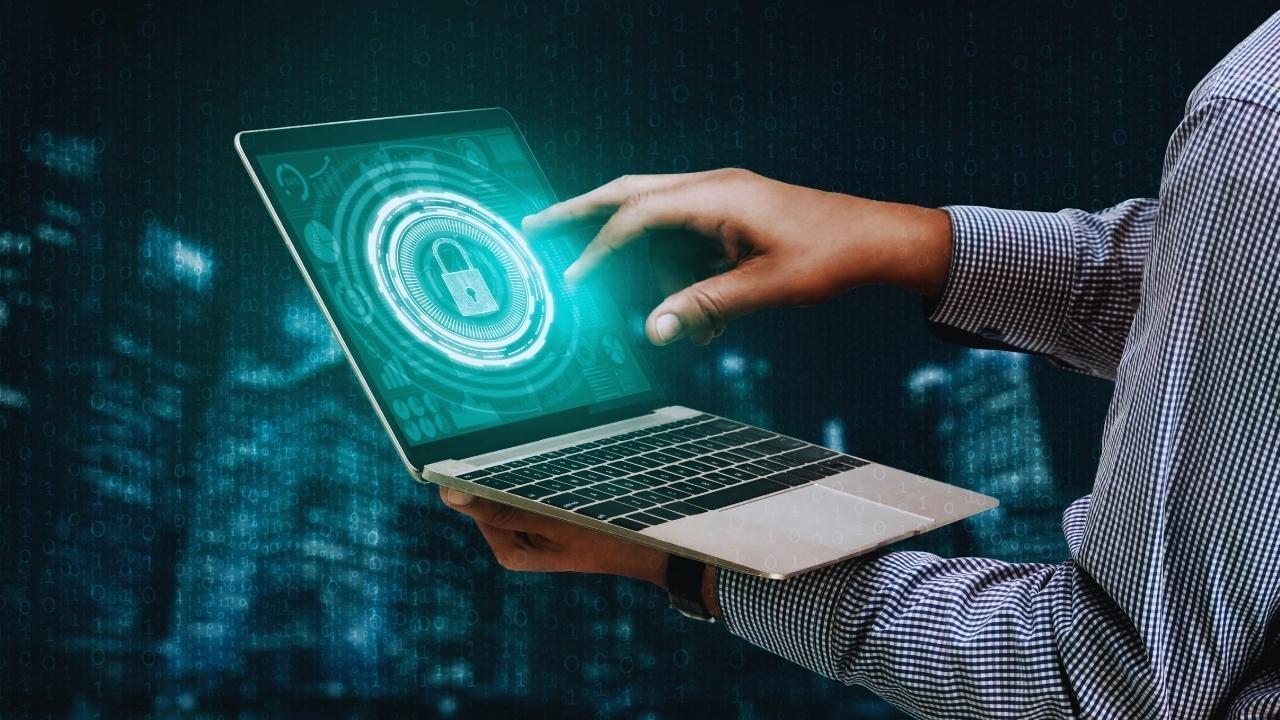
Post by : Anis Al-Rashid
In today’s tech-driven world, every aspect of life, from work to healthcare, relies on digital systems. However, this connectivity comes with heightened vulnerabilities.
Artificial intelligence prominently shapes this challenge. AI acts as a double-edged sword in cybersecurity — serving as both a protective measure and a potential threat. It facilitates rapid threat detection while also creating advanced cyberattacks. Thus, understanding cyber-resilience is vital for both individuals and organizations.
Cybersecurity has shifted from a niche field to a universal obligation.
Once on a slow, steady rise, cyber threats like phishing and malware have skyrocketed due to AI. Cyberattacks that were manually crafted are now automated and can adapt quicker than response strategies.
AI has transformed the threat landscape by enabling:
– rapid automated attack attempts
– deepfake technology
– realistic AI-generated phishing content
– password guessing based on user behavior
– extensive data scraping
– adaptive, real-time attacks
As threats evolve beyond amateur levels into algorithm-driven sophistication, so too must overall cyber-resilience.
Traditional cybersecurity methods prioritize defensive tactics such as firewalls and antivirus software. In contrast, cyber-resilience emphasizes the ability to withstand, adapt to, and recover from incidents.
Cyber-resilience involves:
– anticipating the emergence of threats
– proactive preparation
– minimizing impact during attacks
– ensuring swift recovery
In an AI-driven context, resilience has become essential, as it's not a matter of if an incident will occur, but when.
Despite technological advancements, human behavior remains a primary vulnerability. Cybercriminals exploit this through AI-driven social engineering.
AI doesn’t merely compromise systems; it also undermines trust. Thus, user training and awareness are as critical as technical defenses.
Significant AI-driven threats include:
Deepfake Deception
Fraudulent audio and video requests compromising sensitive transactions.
AI-Driven Phishing
Tailored messages designed to deceive victims based on their language and habits.
Self-Operating Hacking Assets
Scripts efficiently scanning countless systems for vulnerabilities.
Data Corruption
Malicious attacks that taint AI data sets, impacting business outcomes.
Evolving Ransomware
Intelligent malware targeting critical high-value systems.
Identity Theft and Credential Harvesting
Utilizing AI to mimic genuine users based on digital footprints.
The range of threats has expanded and adapted more than ever.
However, AI is not only a tool for attackers; it is also crucial in our defense against them.
AI-enhanced cybersecurity solutions provide:
– immediate anomaly detection
– behavior-driven threat monitoring
– advanced risk prediction
– automated incident responses
– speedy malware detection
– identity validation through behavioral indicators
By continuously monitoring for threats and acting instantaneously, AI establishes a dynamic security perimeter outpacing human hackers.
Building personal cyber-resilience starts with diligent digital habits. Key strategies include:
– employing multi-factor authentication
– consistently updating devices and software
– enabling biometric security features
– utilizing encrypted password managers
– exercising caution with unsolicited links and attachments
– avoiding public sharing of sensitive details
– confirming voice/video requests through a secondary method
– training to identify manipulation tactics
Cyber safety is an ongoing commitment, not a one-time effort.
Businesses need layered security systems and proactive measures. Important actions include:
– integrating AI-enhanced cybersecurity platforms
– regularly conducting cyber drills and breach testing
– adopting a zero-trust security framework
– providing ongoing employee training
– ensuring the security of endpoint devices and internal networks
– safeguarding data in cloud and hybrid spaces
– establishing clear incident response protocols
– monitoring risks associated with third-party vendors
Cyber-resilience is a priority that extends beyond IT; it is a concern for leadership.
Traditional security measures operated under the premise that threats were only external. Today, vulnerabilities can stem from anywhere — within networks, organizations, or supply chains.
A zero-trust model entails:
– recognizing no user or device as inherently trustworthy
– requiring ongoing identity verification
– restricting access strictly to necessary operations
– authenticating every request and scrutinizing each session
Trust should be proven, not presumed, significantly reducing risk.
As AI continues to advance, ethical constraints must evolve in tandem. Emerging standards focus on:
– transparency of data
– unbiased model development
– privacy-centric architectures
– secure AI training practices
– responsible evaluation of AI vendors
Organizations must be vigilant not only in their defensive tactics but also in how they develop, integrate, and manage AI systems.
Cyber-resilience transcends technology; it encompasses trust, ethics, and compliance.
Tomorrow’s cybersecurity landscape will seamlessly blend:
– autonomous security agents
– AI-driven identity safeguarding
– behavioral biometric systems
– self-repairing software
– decentralized identity infrastructures
– continuously evolving threat prediction methods
We are advancing towards a reality where AI identifies threats proactively, neutralizing them before they arise.
In this forward-thinking model, cybersecurity transforms from a passive form of defense into an intelligent, anticipatory, and adaptive framework.
The AI revolution has unlocked fresh opportunities and introduced new challenges. Technology advances rapidly; our defensive strategies must follow suit. Embracing cyber-resilience is essential: it’s proactive, strategic, and constantly adapting.
Those who adapt will flourish; those who neglect the shift risk exposure. Whether an individual or a large corporation, the imperative is clear:
Remain vigilant. Adapt continuously. Safeguard effectively.
In an algorithm-driven world, resilience is not optional — it is crucial.
This article is intended for informational and educational purposes. The levels of cyber risk vary depending on region, system, and user behavior. Readers should assess their security needs and consult qualified cybersecurity professionals for advice on specific tools and compliance standards.










Suranika Roshan Celebrates The Moon Beam Bakery Opening
Suranika Roshan launches The Moon Beam Bakery in Mumbai, with Saba Azad sharing her admiration on In

Jets Set Franchise Record with Dual Special Teams Touchdowns
The New York Jets made history with two special teams touchdowns, marking a record in franchise hist

Chargers Triumph Over Steelers 25-10 in Dominant Display
The Chargers secured a 25-10 victory against the Steelers, showcasing Herbert's skills and overwhelm

Rams Triumph Over 49ers; Adams Leaves with Injury
Los Angeles Rams defeated the San Francisco 49ers 42-26, but Davante Adams exited late with an obliq

Choosing Between Jurel and Pant: An Indian Selection Challenge
Dhruv Jurel's phenomenal form before the South Africa Tests makes it tough for selectors as Rishabh

Karthik Venkataraman Secures Spot in FIDE World Cup Fourth Round
GM Karthik Venkataraman triumphed over Bogdan-Daniel Deac to advance in the FIDE World Cup 2025, sho